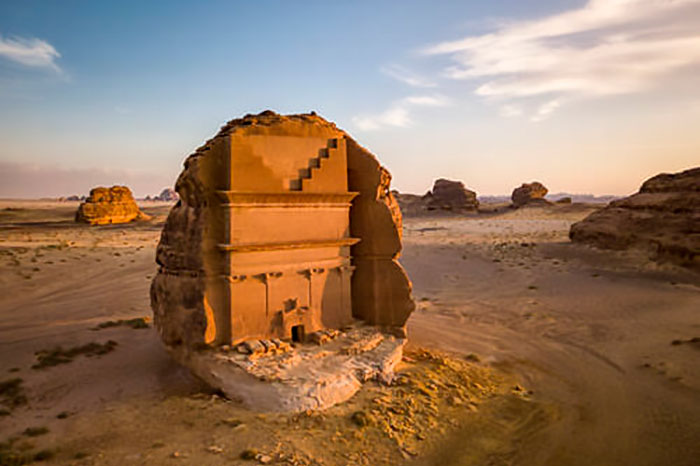The development of tourism in recent years has taken tourists to practically every corner of the globe. This expansion does not allow us to suspect that there is still a place so remote, so hidden, that it is out of reach. Yet it exists. It is the ancient city of Hegra (or Al-Hirj, or also Mada’in Saleh), north of the town of Al-Ula in Saudi Arabia. Hegra is not a particularly remote or hidden place, but it has remained closed to tourism for more than 2,000 years of its existence, even after it became the first Unesco World Heritage Site in Saudi Arabia in 2008. Until now, only archaeologists and experts were allowed to enter. However, the Saudi authorities have finally decided to open the archaeological site to the general public, tourists and the curious.
Hegra, as the site was known in ancient times, was an important trading centre dominated by the Nabataean tribe. After Petra in Jordan, it is the second most important city of the Nabataeans. Spread mainly in southern Jordan between the 2nd century BC and the 1st century AD, the Nabataeans controlled the trade route to the mountainous areas of Jordan, the Red Sea, the Damascus area of Syria, Egypt and southern Saudi Arabia. Tourists will now be able to enjoy over 100 tombs of high-ranking military men and their families, which the Nabataeans excavated from the rocks of the Al-Ula desert. There is no documentary evidence of how the Nabataeans lived, so their history is known from the indirect accounts of the ancient Greeks and Romans.
The opening of Herga to tourism is part of the strategy announced by Prince Mohammed bin Salman in 2016, known as Saudi Vision 2030. It is a further step towards making Saudi Arabia an international tourist destination, a way to diversify the country’s economy and make it less dependent on oil. Undoubtedly, Herga represents an exceptional new development among the world’s tourist destinations.
Sources: Tourinews, The Vintage News, UNESCO, My Modern Met.
Images: UNESCO.








